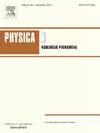Accelerating flapping flight analysis: Reducing CFD dependency with a hybrid decision tree approach for swift velocity predictions
IF 2.7
3区 数学
Q1 MATHEMATICS, APPLIED
引用次数: 0
Abstract
Insect flight depends on flapping their wings, allowing their agile movement. The modulation of wing flapping enables insects to manoeuvre with flexibility. Given the inability to directly control or observe the nuances of insect wing flapping in biological experiments, numerical simulation emerges as a more feasible approach for investigating insect flight dynamics. Through computational fluid dynamics (CFD) analysis, it is possible to obtain highly accurate results and gain insights into the effects of various flapping behaviours on flight. However, the substantial time cost associated with individual simulations poses a challenge, making it difficult to explore the comprehensive range of parameter combinations and variations. In order to enhance the efficiency of research, this study introduces an algorithmic framework that utilises signal decomposition techniques and decision tree to reduce the computational time required for flight simulation. The approach simplifies data complexity, enabling rapid identification of specific flight manoeuvres of interest, followed by detailed examination with conventional method. It allows for predicting flight end-states with minimal simulation data while maintaining high accuracy and reducing dependency on CFD computation. These advancements benefit studies on insect flight postures and the design of micro air vehicles (MAVs), enriching both theoretical and practical aerodynamics.
加速扑翼飞行分析:用混合决策树方法减少对快速速度预测的CFD依赖
昆虫的飞行依赖于拍打翅膀,使它们能够灵活地移动。翅膀拍动的调节使昆虫能够灵活机动。考虑到在生物实验中无法直接控制或观察到昆虫翅膀拍动的细微差别,数值模拟成为研究昆虫飞行动力学的一种更可行的方法。通过计算流体动力学(CFD)分析,可以获得高度精确的结果,并深入了解各种扑动行为对飞行的影响。然而,与单个模拟相关的大量时间成本带来了挑战,使得难以探索参数组合和变化的全面范围。为了提高研究效率,本研究引入了一种算法框架,利用信号分解技术和决策树来减少飞行仿真所需的计算时间。该方法简化了数据复杂性,能够快速识别感兴趣的特定飞行动作,然后用常规方法进行详细检查。它允许用最少的模拟数据预测飞行的最终状态,同时保持高精度并减少对CFD计算的依赖。这些进展有助于昆虫飞行姿态的研究和微型飞行器的设计,丰富了空气动力学的理论和实践。
本文章由计算机程序翻译,如有差异,请以英文原文为准。
求助全文
约1分钟内获得全文
求助全文
来源期刊

Physica D: Nonlinear Phenomena
物理-物理:数学物理
CiteScore
7.30
自引率
7.50%
发文量
213
审稿时长
65 days
期刊介绍:
Physica D (Nonlinear Phenomena) publishes research and review articles reporting on experimental and theoretical works, techniques and ideas that advance the understanding of nonlinear phenomena. Topics encompass wave motion in physical, chemical and biological systems; physical or biological phenomena governed by nonlinear field equations, including hydrodynamics and turbulence; pattern formation and cooperative phenomena; instability, bifurcations, chaos, and space-time disorder; integrable/Hamiltonian systems; asymptotic analysis and, more generally, mathematical methods for nonlinear systems.
 求助内容:
求助内容: 应助结果提醒方式:
应助结果提醒方式:


